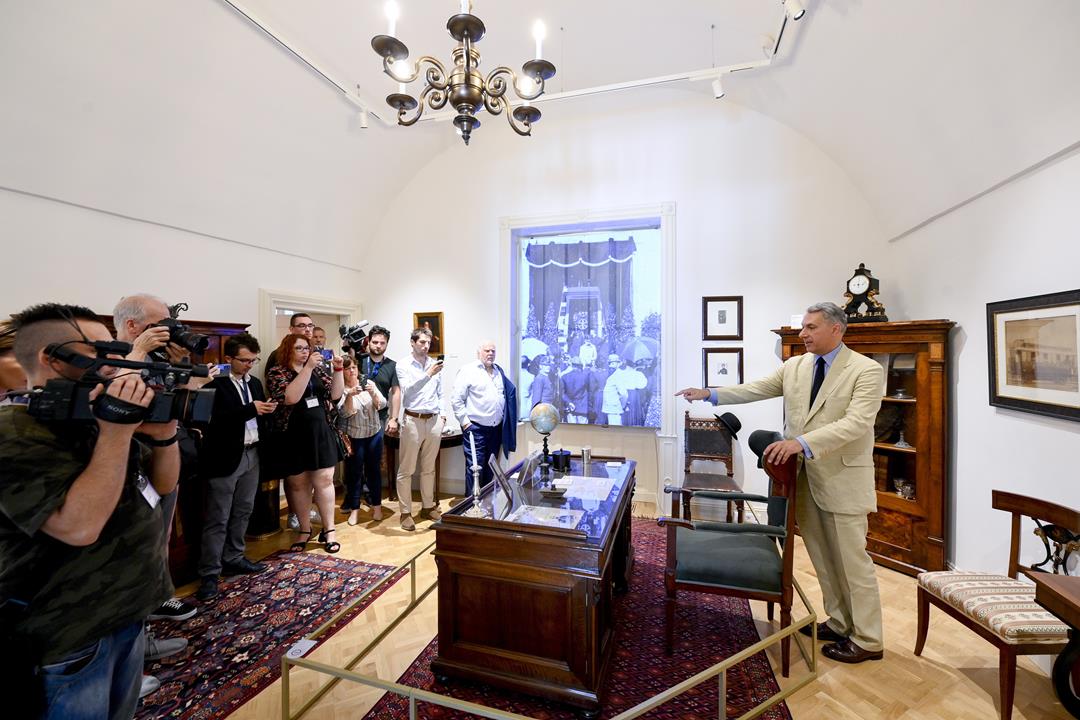PHOTOS: Geszt Tisza Castle in East Hungary astonishingly renewed

The Geszt Tisza Castle was an epicentre of Hungarian politics in the second half of the 19th and the beginning of the 20th centuries. Two of its owners became prime ministers of Hungary. One served for the longest in the position without interruption before PM Orbán won his fourth consecutive supermajority in 2022. Now, the castle is breathtaking and open to visitors.
Geszt Tisza Castle: a memento of Hungary’s history
PM Viktor Orbán “celebrated” the Day of National Cohesion (4 June) in the renewed castle this year with leaders of Hungary, including newly-elected President Tamás Sulyok. The venue choice was not accidental. The Geszt Tisza Castle was an epicentre of Hungarian politics between the 1870s and the 1910s, giving two prime ministers to Hungary. Now, János Lázár invited the press for a tour in the castle.

The first building in the territory was built by László Tisza I (? – 1771) in Baroque style. The two buildings he erected were joined later, creating the current shape of the Tisza Castle. The people of Geszt named the castle “Babylon” since it quickly became a centre of social and political life.

Kálmán Tisza, Hungary’s longest-serving prime minister without interruption (1875-1890), built the bathrooms, the prime minister’s study, and the illustrious terrace. Since Orbán won in 2022, he will become the longest-serving prime minister without interruption after 2025. Orbán also had a term as prime minister between 1998 and 2002.

Multiple functions in the Socialism
Tisza’s son, István Tisza (prime minister between 1903-1905 and 1913-1917) modernised the castle by introducing electricity, hot water and phone connection. The castle’s last owner was Kálmán Lajos Tisza, who fled the estate in October 1944 because of the Soviet troops, nöf.hu wrote.
Soviets lived in the illustrious buildings for months during WWII. Afterwards, the castle had many functions (students’ holiday place, library, school, theatre), but all deteriorated its state.
The renovation started in 2021 and cost EUR 34.4 million, and it presents the History of the Tisza Family and Hungary. It has four thematic areas: politics, church, family and culture. The Geszt Tisza Castle park was also revitalised on 20 hectares. There are lots of indigenous oak, maple and ash trees. Unfortunately, many of the park trees were cut and burnt in 1944-45. Interestingly, Geszt hosted Hungary’s oldest tennis court.

János Arany, one of Hungary’s greatest poets, spent there more than half a year in 1851. Soviets dismantled his original house, and its reconstruction was finished in 1971.
Adopt a castle programme
János Lázár, Hungary’s construction and transport minister, organised a press tour in the castle. MP Lázár submitted a proposal to the parliament in December about a so-called castle adoption programme. That meant companies or wealthy people could rent out castles and maintain them. Public outcry followed. Experts slammed it saying it does not protect Hungary’s built heritage. Katalin Novák, Hungary’s former president, rejected to sign the bill, which was followed by Lázár’s rage. He saw “cowardness and old Communist reflexes” behind the president’s decision.
However, Novák had to resign after the clemency scandal. In June, the Hungarian Parliament passed the bill but with significant modifications. Now, the new owner of the castles must maintain, renew and operate it. Furthermore, the state can reclaim the castles at any time. What’s more, the owners lose ownership the moment its ownership structure lacks transparency.

There are 47 Hungarian castles and fortresses one can “adopt”. The list includes e.g. the Fortress of Sárvár or the jaw-dropping Wenckheim Castle in Szabadkígyós.
Read also:
- Journey through time: Discover the breathtaking castles of historical Hungary – Read more HERE
- 5 magical Hungarian castles you must visit- PHOTOS and more in THIS article
Source:











